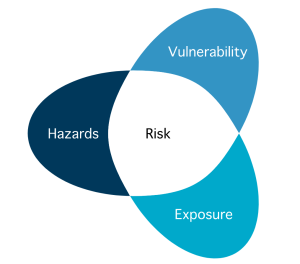As climate changes continue to affect our lives, it is crucial for decision makers and community members to have the information they need to better understand and then address climate-related hazards. Certain communities bear a disproportionate burden from these hazards, which makes it essential to thoroughly understand the different mechanisms, scales, and geographic distributions of climate impacts on community health.
To address this, the Center for Health and the Global Environment has officially launched the Climate Health and Risk Tool (CHaRT), a groundbreaking interactive platform that helps users explore the intricate relationship between climatic, environmental, social, and economic factors contributing to hazards faced by communities. This tool integrates diverse elements such as climate-related risks, population exposure, and vulnerability to estimate the risks to communities effectively.
Users can explore previous heat-related risks through interactive modeling, whether it’s to learn more about what happened in Washington during the 2021 heat dome, or how different geographical locations in Washington State are typically impacted by climate-related hazards based on their region. With comprehensive guidance documents, the CHaRT tool can also equip users with the knowledge and strategies necessary to plan and prepare for future climate-related health risks in their respective communities, which is a crucial next step to safeguard community health amidst changing environmental conditions. By combining multiple community and climate measures, the CHaRT Tool empowers users to understand and characterize the hazards confronting their communities.

The CHaRT Tool operates within a robust conceptual framework based on the Intergovernmental Panel on Climate Change (IPCC) risk framework. This framework considers vulnerability, hazard, and exposure as fundamental components of risk assessment. By integrating these elements, the CHaRT Tool enables a comprehensive understanding of the complex interplay between climate and community health.
At its core, fuzzy modeling forms the backbone of the CHaRT Tool’s analytical capabilities. By employing a hierarchical structure, fuzzy modeling combines logical propositions to evaluate various climate and community characteristics. This approach facilitates nuanced assessments, allowing decision makers to explore critical questions and make informed choices regarding climate-related health planning. This approach also allows users to assess various factors, ranging from social and economic characteristics to specific hazards like extreme heat or flooding.
We invite you to explore the Climate Health and Risk Tool and leverage its powerful capabilities to address climate-related health challenges in your community. Together, we can foster resilience and protect the well-being of individuals and communities in the face of a changing climate.